To understand some of the variations of fabric for a windfence you may be confronted with, it helps to be able to recognize the different types of construction. The range shown here is to illustrate typical variations, not as an endorsement. Some variations are very poor fabrics for any structural uses. The fabrics samples are approx 35mm (1.5”) square in actual size.
Fabric Variations
Industrial mesh fabrics are an excellent way of modifying the environment. They can be strong, effective, economical, and durable. There are, however, literally thousands of variations. Many of the variations are not visually obvious, but can dramatically change the effectiveness and durability of the fabric.
This note covers some of the most common variations.
Base Material Variations
Basically there are four suitable synthetic fiber forming materials or polymers – high density polyethylene (HDPE), polypropylene, nylon and polyester.
- (a) High Density polyethylene (HDPE) -good Ultra violet resistance good strength, good abrasion resistance, reasonable cost, good chemical resistance.
- (b) Polypropylene – reasonable Ultra violet resistance, good strength, moderate abrasion resistance, low cost, good chemical resistance.
- (c) Polyester – excellent Ultra violet resistance, high strength, good abrasion resistance, high cost, good chemical resistance.
- (d) Nylon -, reasonable Ultra violet resistance, high strength, high cost, good abrasion resistance, reasonable chemical resistance, tends to stretch.
All the materials can be made with additives that change their properties, but the additives add to the cost and sometimes alter other properties. Modifiers are available for things such as colour, UV resistance, fire resistance, antistatic, antistick, and antislip. Their properties such as strength and stiffness are also affected by the way the yarn is formed. All yarns are formed by being extruded through a die then stretched (or “orientated”)- the amount of stretch, the temperature it is done at, the way it is heated and the way it is cooled all change the structural properties of the yarns. The remaining variation is to create composite materials by coating (say) high strength polyester with highly UV resistant vinyl. Fibers can also be used to reinforce films of HDPE.
Yarn Variations
Yarn form the cross sectional shape of the textile yarn can have a large influence on the performance of the yarn itself. Three main forms are generally utilised -monofilament multifilament and tape.
Generally the monofilament is of circular cross section and thus has a low surface to volume ratio This makes it stiffer and gives it better UV resistance as the UV rays have further to penetrate. Flat monofilaments are also used, especially in denser woven shade fabric. Also monofilaments tend to have a smoother surface and thus better abrasion resistance. Multi-filaments are a twisted bunch of very fine filaments. This gives flexibility, but tends to reduce strength, also it gives a high surface to volume ratio, which allows a high UV penetration, though this is to some extent shielded by those fibers on the outside. But as these outer fibers degrade they allow the UV into the inside.
Multifilaments also tend to have lower abrasion resistance as the discontinuous surface allows snagging and damage.
Tape is of very thin rectangular cross section, thus has a high surface to volume ratio (Like a piece of paper). Thus the UV can penetrate easily to the entire cross section. This is reduced a little by twisting or folding. Abrasion resistance also tends to be poor as the tape folds and splits easily, giving rise to fibrillation and wear. Tape also tends to be reasonably flexible.
UV and Weather Resistance Windfence Fabric
Probably more is talked and less understood of this property than any other. Most people interpret UV resistance as how long the cloth will last on a fence. But this is not what is determined in many tests. The only way to determine how long cloth will last on a fence is to put it on a fence – and this is a very time consuming way of getting results. Something similar is an Outdoor Exposure Test. The fabric is placed on a test frame at an angle of 45º to the horizontal and facing the equator. At regular intervals pieces of cloth are removed and tested for strength . One can then graph strength loss against time.
But we then have the problem of what strength is fail strength. The standard test is time to 50% strength (T50) but 50% strength may still be quite adequate to stay together on a fence. Also a cloth which is weak when new might have quite a long T50 figure, but below the strength required to stay in place in a very short time (see Figure 10). Thus a cloth which starts out very strong and declines in strength relatively quickly could in fact be better for actual performance on a fence than another cloth which starts weak and declines only slowly.
Another method of test is the accelerated weathering test, such as the Atlas Weatherometer, where the samples are exposed in a cabinet around a Xenon Arc lamp, which approximates intense sunlight, and the cabinet can be temperature and humidity cycled to simulate conditions in the field. Times are quoted as being equivalent to time outside for example 300 hours in the cabinet is equivalent to a year outside. Unfortunately this cannot be done precisely without a lot of correlation with actual outside tests and even then variable figures are obtained. Thus all one can say positively is that if a sample lasts longer than another in the weatherometer then it will last longer outside -an exact figure is difficult to quote – though some people attempt it; One of the causes of this discrepancy and difficulty is that it is very difficult to simulate in an accelerated manner the factors that cause deterioration in the field, for we are not just talking of UV effects, but also temperature, wind (abrasion) rain (leaching of stabiliser) and atmospheric pollution (chemical resistance).
The next variable in UV life is the actual UV the fabric will be exposed to. UV levels vary with atmospheric pollution, ozone layer thickness, angle of the sun to the horizon, angle of the fabric to the sun, grime on the fabric and reflectivity of the surrounding environment. Combined these factors can add up to several times the UV exposure in say rural Australia compared to say an industrial site around the Great Lakes.
Having disposed of some illusions, let us examine a few factors which affect a cloth’s UV stability. Some we have already mentioned. Some polymers are basically better than others for UV and weather resistance. High Density Polyethylene is definitely better than polypropylene. Polyester is better than both of them, but much more expensive. Both can be made to last similar times with the addition of carbon black or other chemicals.
A brief dissertation as to why such apparently inert materials such as polyethylene and polypropylene do break down under the influence of UV light might be appropriate.
The main culprit is what is known as a Free Radicle. This is a very reactive molecule. These can be present from impurities either left over from the manufacturing process or in abnormal bits in the polymer chain or are created in the heat of the extrusion process. The UV light activates them and aided by oxygen from the air the free radicles start moving around in the polymer and knocking into molecular chains. Because they are so reactive they react with parts of the molecule and cause it to split off. The bits that split off in turn become free radicles and continue the process. The polymers have their unique properties because they consist of long chains of molecules. By breaking up the chains the molecules are shortened and they start losing their properties. They become weaker and chalky in appearance. Eventually they become a powdery substance – a lot of small molecules.
To stop this a number of things can be done.
- Make the object made from the polymer thick as the UV rays only penetrate the immediate surface. Maximise the surface to volume effect, as in monofilament.
- Colour the polymer with pigments which keep UV rays out. Carbon black is the best for this but there are others such as red-brown Ferric Oxide. Some pigments neither help or hinder, such as titanium dioxide (white) and phthalocyanines (blue and green) but other pigments can actually accelerate degradation. These are the pigments that fade rapidly – in fading they form free radicles – and they include organic reds and yellows. So the best pigment for UV resistance is carbon black – but it must be of fine particle size and well dispersed (mixed)
- Add UV stabilisers. These substances react with free radicles and block or neutralise them. But they do get consumed and can also be leached out of the polymer.
Fabric Information – Strength
The strength of the cloth depends on several factors – the weave, that is how many yarns per inch there are, the strength of the individual yarns and how the yarns are arranged.
- Tensile strength is measured by stretching a 50mm strip of a specified length and separation speed until it breaks and recording the stress at break and the elongation.
- Burst strength is carried out on a Mullen Burst tester – in this the cloth is clamped over a rubber diaphragm which is pressurized and when the cloth bursts the pressure is recorded.
- Abrasion tests are somewhat arbitrary. One is the Martindale test which tests for the rubbing resistance of cloth.
- The final strength characteristic relates to transferring the tension to a support structure. A fabric which had say 6 yarns per inch all with a strength of 7lb would have a nominal tensile strength of 42lb / in. If the most economical connection method was a clip which held 4 threads, and they were spaced very 10 inches, then the nominal effective strength would be 4 x 7 / 10 = 2.8 lb / in. As most connection systems pinch the yarns in some way which reduces their strength, this effective strength might actually be as little as half of the nominal value or 1.4 lb / in.
A good connection system which evenly spreads the load is clearly an important ingredient in any structure. WeatherSolve Structures (Ultra Span at the time) has developed a range of systems which match the strength of the fabrics and the loads being applied. These have been tested in structural tests for sustained and impact loads as well as field tested over many years and storms such as Hurricane Andrew in Florida in 1992.
Fabric Information – Construction Variations
There are 4 main ways of producing a porous fabric. Each method uses very different machinery. The manufacturers that sell the machinery endeavour to show that their machine is the panacea by producing pattern books that show how their machine can imitate patterns produced by others. This creates the wide variety.
- Extruded / punched Made from solid sheet that is slit or punched, then stretched to create the distinctive pattern shown. Sheets are narrow and rigid with (usually) large openings. The fabric works well for snow fences where a 2″ (5cm) hole is an advantage. Bird nets which need a ½” (1cm) to 1″ (2.5) hole (depending on the size of the birds) made using this construction are typically weaker than other constructions.
- The fabric is difficult to attach to cables in a reliable way.
- Woven Uses yarns running in two (perpendicular) directions. Leno weave is variation which locks yarns more tightly. Collandering is process where fabric is “ironed” after weaving to slightly melt crossing yarns together for additional stability. Woven fabrics are the most economical way of covering an area. A big advantage of woven fabrics is that they have less tendency to loosen with time than knitted fabrics. Another advantage is that as they are not very deep, the level of shade they produce over the day varies less than the deeper knitted fabrics.
- Knitted Uses the same yarn to go across and along the fabric. Knitted fabrics can run from holes 6″ (15cm) across to virtually solid. Knits are stretchier than weaves as the bends in the yarns pull tighter under load. Knits, and particularly the more open ones, have the interesting property that pulling them in one axis (say length) makes them narrower in the other (width). This makes them particularly suitable for attaching to frames where pulling the last edge allows the whole panel to be tightened.
Knotted ` Knotted nets have evolved from the fishing industry. Superficially they can look similar to some of the knitted nets, but the joints are tighter and formed using a bundle of yarns working as one whereas the knits are formed by interlacing several yarns.
Effectiveness
Fabrics are used for a wide range of uses, and so are tested for specifications relating to those uses.
- Shade This is the amount of light a fabric stops. A confusing concept here is that the colour of a fabric alters the light spectrum the fabric stops. White shade for example stops similar to black at the UV end of the spectrum, but stops much less at the infra-red end. Another factor is sun angle. Shade is measured with the light source directly above the fabric, but in Washington State for instance the sun never gets above an angle of 50º to the Southern horizon.
- Windbreaks The amount of wind a fabric stops is a function of it’s aerodynamic porosity. As is explained in Note 11 of this series, this is quite different to visual porosity. The second factor of particular importance for windbreaks is the wind load the fabric generates. The load factor comes from the same wind-tunnel tests used to determine aerodynamic porosity. This key factor can dramatically change the structural requirements to support the fabric.
- Fire resistance, fire retardancy. There are number of codes governing the level of contribution of fabric to a fire. Untreated fabrics will burn, though the flame-spread index tends to be very low as the polymers typically melt a hole which falls away from the flame. It is possible to add enough fire suppressants to the polymers to actually smother a flame. The problem is that at that level of suppressants, UV life in particular is reduced as the added chemicals interfere with each other. Fire resistance to the point that the fabric will not add to the flame is easier to achieve.
- Hail resistance. This relates to the hole size. Note that a taut fabric will generally stop a lot of the hail that is small enough to fall throughit as those hail stones hitting the net bounce up and take the energy out of other stones that are falling.
- Bird and insect proofing. Again this relates to the mesh size. ¾” is a very common bird mesh as it still allows bees to pass through.
- Dust containment. The mesh size needed to stop dust is a function of the dust particle size and the wind pressure trying to force the dust through it. As most dust containment systems involve enclosing a source, there is very little wind on the inside forcing the dust out so more open meshes than might be expected are perfectly satisfactory.
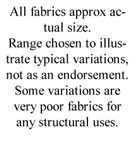
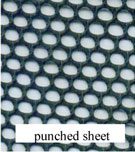
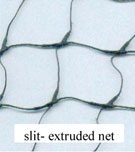

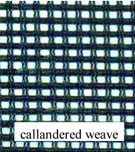
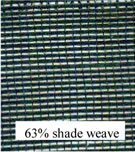
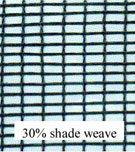
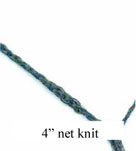

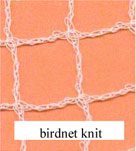
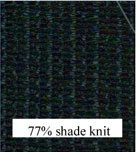

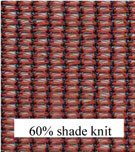

* Portions of the text above are referenced from “Fabric Design for Artificial Windbreaks (unpublished paper)” by George Edwards, Donaghy’s Industries, NZ.





Cleaning of your Wind Fence.
- Cleaning should be done from a manlift, scissor lift or suitable safe lifting platform.
- Use a pressure washer with a wide spray nozzle (40 degrees or more)
- Keep the end of the wand far enough from the fabric that the threads are not opening or moving drastically.
- Ideal angle of the wand is down at 20 degrees.
- Do not use hot water.
- It is possible to damage your fence if cleaning is done aggressively or without attention.
- If you are noticeably creating holes/gaps between threads your nozzle is too close or your pressure washer is too powerful.
